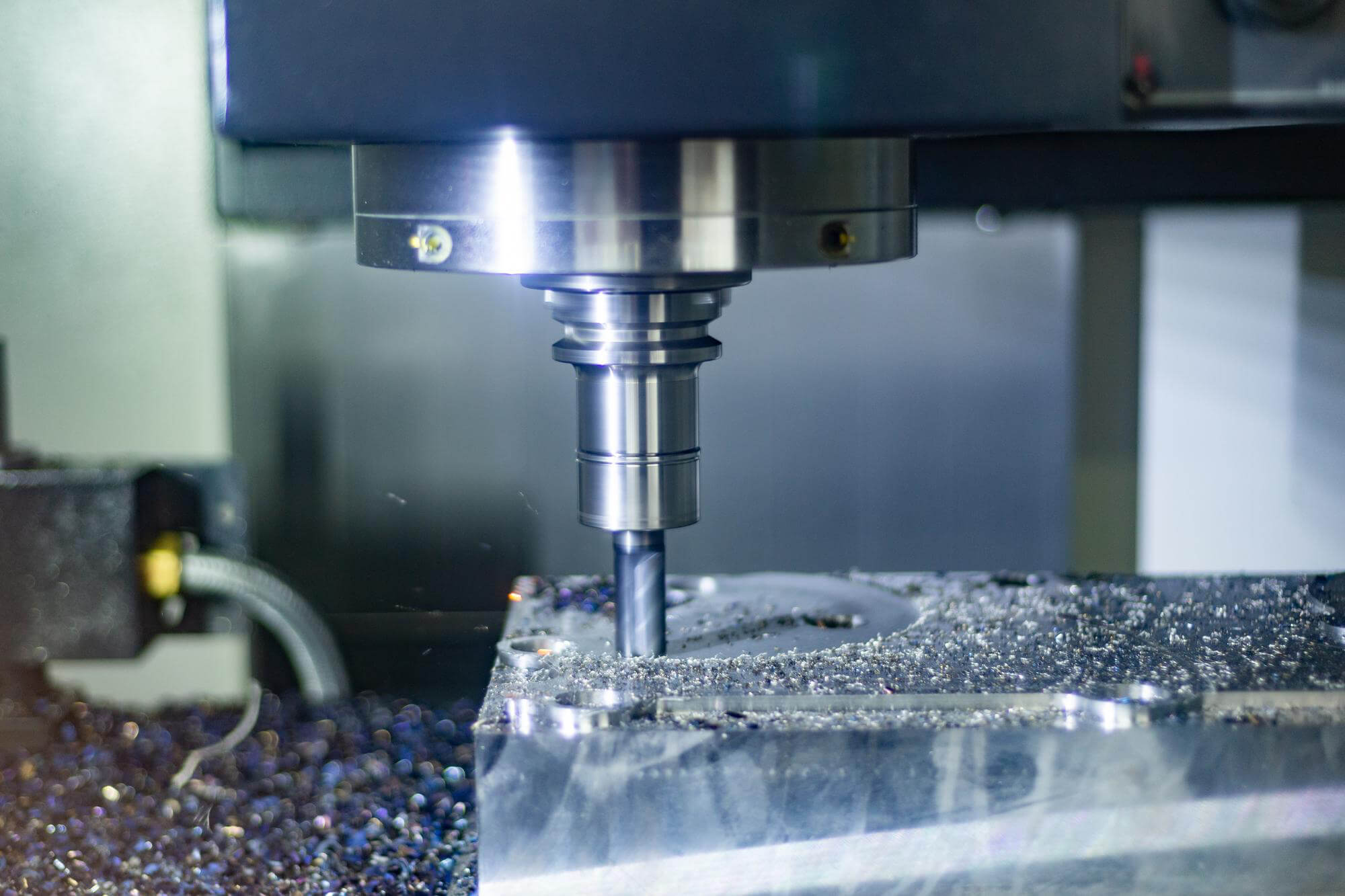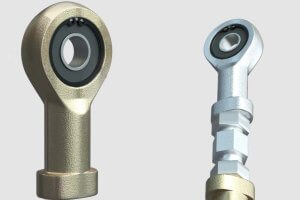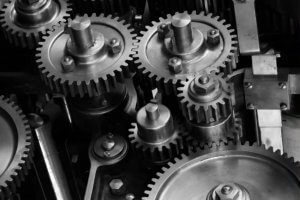Introduction to CNC Machining and Surface Quality
CNC machining is a cornerstone of modern manufacturing, enabling the production of intricate and precise components across various industries. As the demand for high-speed CNC machining grows, the importance of surface quality becomes increasingly significant. Surface quality, often quantified by surface roughness, directly impacts the performance, durability, and aesthetics of the final product. Achieving optimal surface quality is a challenge, particularly in high-speed machining processes, where heat and cutting forces are substantially higher. This is where glass beads for blasting and careful consideration of machining parameters, especially in materials like hardened and tempered steel, play a crucial role.
Glass beads for blasting have become a favored method for enhancing surface finishes in CNC machined parts. These beads, typically made from soda-lime glass, are used in a controlled blasting process to smooth out the surface of machined components. This method not only improves surface roughness but also enhances mechanical properties such as fatigue resistance and corrosion protection, making it particularly valuable for parts made from challenging materials like hardened and tempered steels.
In this article, we will explore how glass beads for blasting can be effectively used to optimize surface quality in high-speed CNC machining, focusing on their application in machining steel, particularly hardened and tempered variants. We will discuss the benefits of this method, the factors influencing surface quality, and provide guidance for procurement professionals on selecting suppliers who specialize in this surface finishing technique.
Understanding Glass Beads for Blasting
Glass beads for blasting are spherical particles made from high-quality glass, available in various sizes, typically ranging from 20 microns to several millimeters in diameter. The size and composition of the beads are critical in determining the final surface finish of a CNC machined part. Smaller beads are often used for fine finishes, while larger beads are more effective in removing surface imperfections.
The blasting process involves propelling these glass beads at high velocity onto the surface of the machined part. The impact of the beads removes burrs, scales, and other surface contaminants, leaving behind a smooth and uniform finish. Unlike other abrasive methods, glass bead blasting is non-aggressive and does not remove material from the part, making it ideal for precision components that require tight tolerances. This is particularly important in machining hardened and tempered steels, where maintaining the integrity of the surface and subsurface is critical to the part’s performance.
Benefits of Using Glass Beads for Blasting in CNC Machining
- Improved Surface Finish: Glass bead blasting significantly reduces surface roughness, achieving smoother finishes that meet stringent industry standards. This is crucial for parts used in applications where friction, wear, and aesthetics are critical, such as in the automotive and aerospace industries.
- Enhanced Durability: The process of glass bead blasting not only smooths the surface but also induces compressive stresses on the surface layer, enhancing the fatigue resistance of the part. This is particularly beneficial for components subjected to cyclic loading, such as those made from hardened steel.
- Corrosion Resistance: By refining the surface texture, glass bead blasting helps to close up micro-pores and other imperfections that could harbor corrosive agents. This results in improved corrosion resistance, which is essential for metal parts exposed to harsh environments.
- Non-Aggressive Material Removal: Unlike other abrasive blasting methods, glass beads do not significantly remove material from the surface. This ensures that the part’s dimensions and tolerances remain intact, which is vital for precision engineering applications, especially when dealing with high-strength materials like hardened and tempered steels.
Factors Affecting Surface Quality in Glass Bead Blasting
The effectiveness of glass bead blasting in improving surface quality depends on several factors:
- Bead Size and Shape: The size and shape of the glass beads determine the degree of surface smoothing. Smaller beads are better for achieving finer finishes, while larger beads are more effective at removing surface imperfections.
- Blasting Pressure: The pressure at which the beads are propelled onto the surface affects the outcome. Higher pressures can lead to more aggressive blasting, which may be necessary for rougher surfaces but can also risk damaging delicate parts, especially when dealing with hardened and tempered steels.
- Blasting Angle and Distance: The angle and distance of the nozzle relative to the part’s surface can influence the uniformity of the finish. A consistent angle and appropriate distance help ensure even coverage and prevent uneven wear.
- Material Type: Different materials react differently to glass bead blasting. Softer metals may require lower pressures to avoid deformation, while harder materials, such as hardened and tempered steels, can withstand more aggressive blasting.
- Cycle Time: The duration of the blasting process also impacts the final finish. Longer cycle times can result in a finer finish but may also increase the risk of over-processing, particularly in high-strength materials.
The Impact of High-Speed Machining on Surface Roughness
High-speed machining (HSM) significantly influences the surface roughness of CNC machined parts, especially when working with materials like hardened and tempered steels. The relationship between cutting speed, feed rate, and surface roughness is critical in determining the final quality of the machined part. As cutting speeds increase, the heat generated at the cutting zone also increases, which can lead to thermal softening of the workpiece material and affect the surface finish.
For example, when high-speed milling hardened steel, the surface roughness typically decreases as cutting speed increases, up to a certain point. Beyond this optimal speed, the surface quality may deteriorate due to increased tool wear and the onset of thermal damage to the workpiece. This phenomenon is particularly pronounced in materials like 45 HRC hardened steel and tempered steel, where maintaining a balance between cutting speed and feed rate is crucial to achieving the desired surface finish.
Moreover, the use of ceramic tools and polycrystalline cubic boron nitride (PCBN) in high-speed machining of hardened steels has shown that surface roughness can be significantly improved when optimal cutting parameters are used. These tools can operate at higher speeds and temperatures, allowing for smoother finishes and reduced cycle times. However, the correct use of these tools, combined with post-processing techniques like glass bead blasting, is essential for ensuring that the final surface quality meets the required standards.
Selecting the Right Supplier for CNC Machined Parts with Glass Bead Blasting
When selecting a supplier for CNC machined parts that require glass bead blasting, consider the following:
- Experience and Expertise: Choose a supplier with a proven track record in CNC machining and surface finishing, particularly with glass bead blasting. They should have the necessary equipment and knowledge to handle complex parts and meet your specific surface quality requirements.
- Quality Control: Ensure the supplier has robust quality control processes in place to monitor surface roughness, dimensional accuracy, and material integrity after blasting. This will ensure that the parts meet your exact specifications.
- Customization Capabilities: Look for a supplier that can customize the blasting process to suit your parts’ unique needs, including adjusting bead size, pressure, and cycle time based on the material and design specifications.
- Turnaround Time: Consider the supplier’s ability to meet your production timelines without compromising on quality. Efficient processing and prompt delivery are key factors in maintaining your supply chain’s efficiency.
- Certifications: Verify that the supplier has relevant certifications, such as ISO standards, which indicate their commitment to quality and consistency in their processes.
Case Studies: Glass Bead Blasting in High-Speed CNC Machining
To illustrate the effectiveness of glass bead blasting in improving surface quality, especially in high-speed CNC machining of steel components, let’s look at a few case studies:
Case Study 1: Automotive Components
A supplier of high-performance automotive components used glass bead blasting to improve the surface quality of CNC machined aluminum and hardened steel parts. The blasting process reduced surface roughness by 50%, leading to enhanced aerodynamic performance and improved fuel efficiency.
Case Study 2: Aerospace Parts
In the aerospace industry, surface integrity is crucial. A manufacturer of aerospace brackets used glass bead blasting to achieve a smooth finish on titanium and hardened steel components. The process not only met the stringent surface finish requirements but also improved the fatigue resistance of the parts, extending their service life.
Case Study 3: Medical Devices
A medical device manufacturer used glass bead blasting to refine the surface of stainless steel surgical instruments. The process eliminated surface imperfections, resulting in a high-gloss finish that met both aesthetic and functional requirements.
Data Tables for Reference
Table 1: Surface Roughness Comparison Pre and Post Glass Bead Blasting
| Material | Pre-Blasting Ra (µm) | Post-Blasting Ra (µm) | % Improvement |
|---|---|---|---|
| Aluminum Alloy | 1.2 | 0.6 | 50% |
| Stainless Steel | 0.8 | 0.3 | 62.5% |
| Hardened Steel (45 HRC) | 1.5 | 0.7 | 53.3% |
Table 2: Parameters for Optimal Glass Bead Blasting in CNC Machining
| Bead Size (µm) | Blasting Pressure (PSI) | Nozzle Distance (inches) | Cycle Time (seconds) |
|---|---|---|---|
| 50-100 | 60-80 | 6-8 | 30 |
| 100-150 | 80-100 | 6-10 | 45 |
| 150-200 | 100-120 | 8-12 | 60 |
Glass bead blasting is a highly effective method for optimizing the surface quality of CNC machined parts, particularly when dealing with high-strength materials like hardened and tempered steels. By carefully selecting the appropriate bead size, pressure, and cycle time, manufacturers can achieve superior surface finishes that enhance product performance and durability. For procurement professionals, choosing a supplier with expertise in CNC machining and glass bead blasting is crucial to ensuring that parts meet the highest quality and precision standards.
Other Articles You Might Enjoy
- Surface Refinement: Leveraging Bead Blasting for CNC Machining
In the realm of CNC machining, surface quality plays a pivotal role in determining the overall performance and aesthetics of the final product. Leveraging bead blasting as a surface refinement…
- Bead Blasting: The Secret to Quality CNC Machining(cnc machining tools Mavis)
The world of manufacturing has witnessed revolutionary changes with the advent of Computer Numerical Control (CNC) machining. It is a process used in the manufacturing sector that involves the use…
- The Future of Beryllium Copper in CNC Machining: Is It Still the Go-To for Electrical Connectors?
The Significance of Beryllium Copper in CNC Machining and Electrical Connectors Beryllium Copper, commonly referred to as BeCu, is a copper alloy with 0.5-3% beryllium that exhibits superior thermal conductivity,…
- Custom CNC Machining Solutions for Brass and Stainless Steel
Introduction to Custom CNC Machining Solutions for Brass and Stainless Steel Custom CNC (Computer Numerical Control) machining is a manufacturing process that involves programmed codes directing the movement of factory…
- High-Precision CNC Machining for Military Applications
Understanding the Concept of High-Precision CNC Machining High-precision Computer Numerical Control (CNC) machining is a vital technology in numerous industries, providing an unparalleled level of accuracy and efficiency. It involves…
- Precision CNC Machining for the Aerospace Defense Industry
Precision CNC Machining in the Aerospace Defense Industry In modern manufacturing sectors, precision Computer Numerical Control (CNC) machining plays a critical role. It is an automated process that uses pre-programmed…








